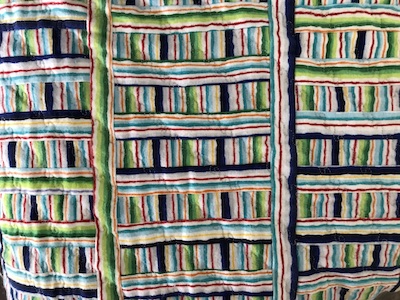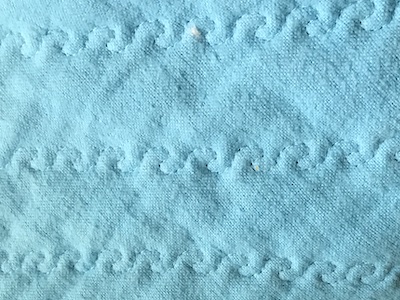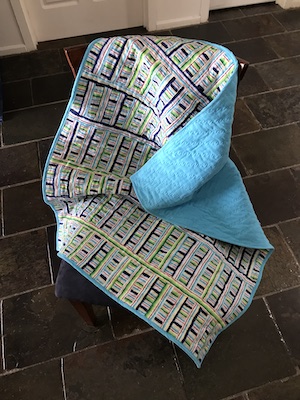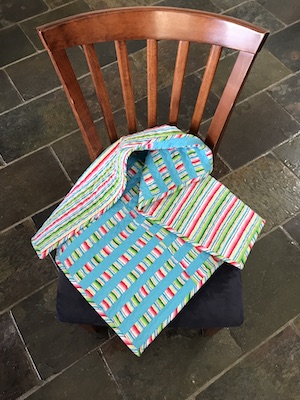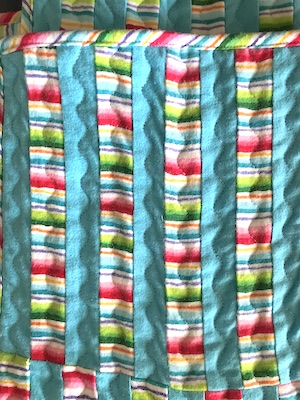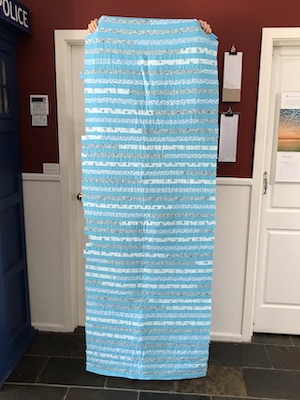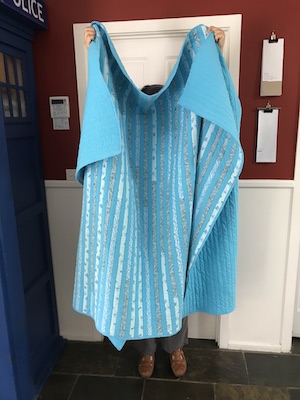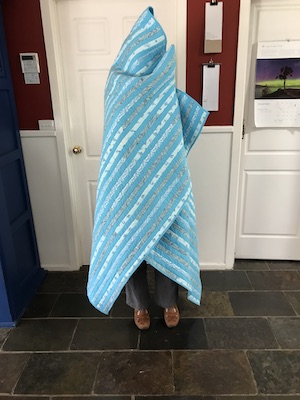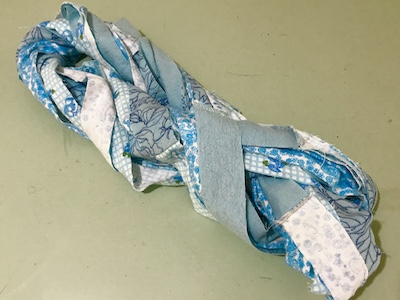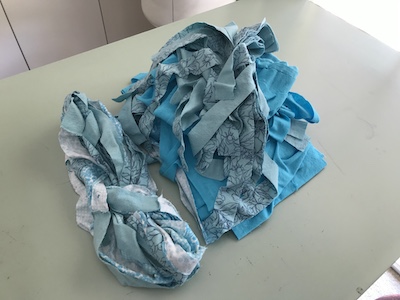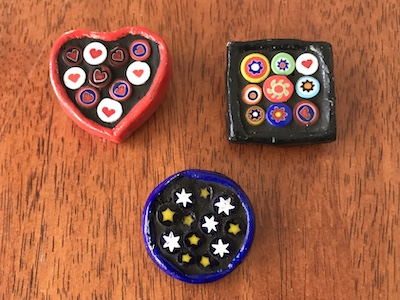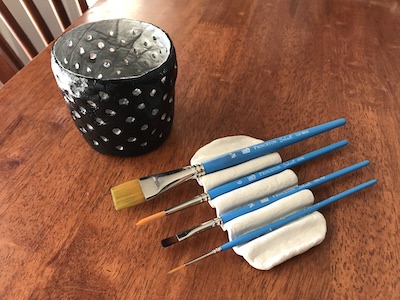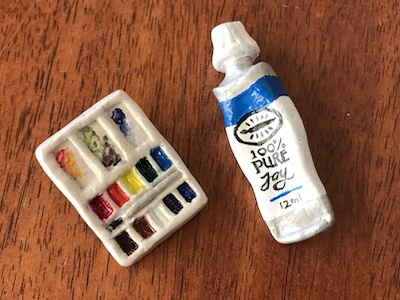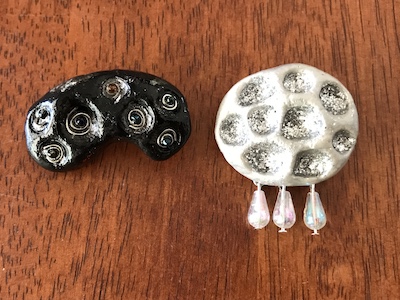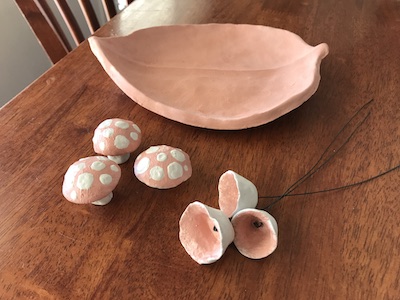With the Blue Quilt and Rainbow Cat quilt in limbo it seemed a good time to assess the remaining flannelette strips. I didn’t want a quilt with fire engines, monkeys, frogs, princesses and other themes for children, so I removed those. I put aside some black and red skull themed strips to make a lap blanket with because I like them. The remaining strip stash was made up of solid colours, strips of multicolour striped fabric, quite a bit of purple, and leftovers from the Blue Quilt.
I’d had an idea for a quilt that looked like a watercolour paint box, but multicolour fabric wouldn’t work for that and I didn’t have enough variety of single colour fabric in green, yellow and orange fabric. The fact that the fabric I had was limiting my creativity was a good thing: it meant the quantity of strips had reduced significantly. If I wasn’t going to buy more fabric I had to work with what I had. So what could I make?
Idea 1: a purple quilt
Idea 2: another blue quilt (but using an easier technique)
Idea 3: a graduated solid colour quilt – perhaps with alternating white stripes
Idea 4: a quilt from all the leftover striped fabric
Idea 5: a skull-themed lap quilt
So not so plenty to keep me entertained for a while. However, this was supposed to be the Summer of Quilts, not the Summer and Autumn of Quilts. I wanted to be finished and done with flannelette strips by the end of February so I could go back to sewing clothing in March, even if it meant tossing the remainder into the recycling.
If I couldn’t get all the quilts made by then, what should I aim to complete?
The answer was this: as many tops as possible. My aim was to use as many of the strips as possible. I didn’t need the topstitching part done to achieve that. The Rainbow Cat Quilt, Blue Quilt and anything else I made could be quilted another time.
Could I get the above five quilt tops made in less than a month? Perhaps, if I worked fast and smart. No fancy block designs. No paper piecing of blocks that changed shape after the blocks were sewn together. Just strip quilts, like the aqua quilt, or very basic blocks.
The tail end of the Summer of Quilts was going to me a race against the calendar.

